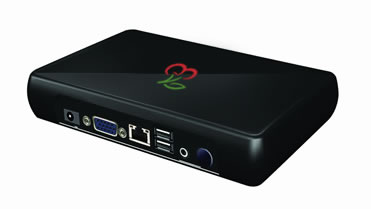Do pens still have a future?
Do pens still have a future?
Imagine a new Library of Alexandria. Imagine an archive that contains all the natural and social sciences of the West—our source-critical, referenced, peer-reviewed data—as well as the cultural and literary heritage of the world’s civilizations, and many of the world’s most significant archives and specialist collections. Imagine that this library is electronic and in the public domain: sustainable, stable, linked, and searchable through universal semantic catalogue standards.
Thanks to @ostephens on Twitter who pointed out this thoughtful article from Lisbet Rausing on imagining the future of libraries.
It’s an interesting observation when in the article it says
the question for scholars and gatekeepers is not whether change is coming. It is whether they will be among the change-makers. And if not them, then who?
We know change is coming, we can pretend that we can fight it, but the reality is that we need to be making that change.
Can you predict the future?
Do you know what life will be like next year, in five years, in ten years?
Over the last year or so I have been doing a few keynotes and presentations entitled the future of learning. I do start with a caveat that I don’t know the future for sure and that no one can really predict the future…
Though as a reflective person I do look back at the work I have been doing on mobile learning and I think there are lessons to be learned about the journey I have travelled.
This is me in 2006 based on work I was doing in 2004 and 2005.

One of the projects we started working on was with HP looking at how we could use an HP Jornada on our then fledgingly wireless network to allow visitors additional and enhanced information on webpages about the exhibits. One of the key questions at the time was how we got the URLs into the devices at the right place. Then we decided to use HP’s Jetsend IR technology to “squirt” the URL to the Jornada. Of course since then the technologies have moved on and importantly so have the public. Today you would probably let the visitors use their own devices and smartphones. You would use QR codes, Bluetooth or more probably in the future RFID to find out where the visitor was before sending them the information (or letting them access the information via QR codes). If the attraction was outside then GPS could be used. The key though was not the technology but the concept of enhancing a visitor’s experience with additional content through a mobile device.
After leaving at-Bristol and joining the Western Colleges Consortium, I continued to work on mobile learning; at that time there was no funding available.
When I was working on mobile learning all those years ago, the reason was that mobile phones and mobile devices were becoming more sophisticated and more useful to consumers and business. I knew then it would only be a matter of time before they become useful to education and importantly a focus for policy and funding.
And in 2007 along came MoLeNET, millions of pounds of capital funding with a focus on mobile learning in FE.
There is no way that I would call myself a futureologist, but from an FE perspective I am looking at how new technologies can enhance and enrich everyday life, as before long these technologies will enter education.
So the big question is what am I working on now? What do I think will have a real impact in education, not just for learners, but also for funding and projects.
Well I am not working on Second Life or MUVEs. These do have some great application to learning, however until consumers start to use these technologies a lot more, than we won’t see a big change in their use in education.
Social networking and Web 2.0 are very big in the consumer field at the moment, Facebook is everywhere and corporate and entertainment use of these tools is now much more widespread than it was just a year or two ago.
As a result policymakers will start to think about how these tools and services can be used in education. And where thinking starts, funding usually follows…
So what about next year or the year after?
Well for me the “next big thing” is e-Books and e-Book Readers. These will hit the consumer market big time over the next three years. We will see many more people reading books, magazines and newspapers via devices such as the Apple iPad, Microsoft Courier and other devices not yet on the market. More publishers and broadcasters will start to think about how they are going to use these devices and start offering content on them, think of BBC iPlayer and its availability on the iPhone.
As a result policymakers will start to think about how these new technologies can be used in education. And where thinking starts, funding usually follows…
You see at the end of the day, it will not be how these products are used by educators, it’s how they are taken up and used by consumers and business. Whether that is right or wrong, is not really the case, as more often this is how it happens now, and has happened over the last twenty to thirty years, with most technologies.
This is my presentation from FOTE 2009.
After posting the “video” of my presentation I have uploaded some more media from the MIMAS mobile learning event.
A video of my presentation.
A slideshare overview of my slides.
Some images from the day.
Yesterday I presented at the MIMAS Mobile Learning event on “The Future of Learning”.
What I was hoping to do was get people thinking and discussing, to start the conversation.
Is this the future of home computing?

A small $249 box with access to the web (and 50GB of online storage).
The Register reports that:
Start-up CherryPal is taking pre-orders today for its partly cloudy “desktop” that mashes web-hosted computing, going green, open source, and social networking into a 10 ounce box.
The (self-titled) CherryPal systems are $249, and surprisingly won’t require a monthly subscription despite the fact that most of its storage capacity and several of its features hosted in the cloud.
CherryPals are thinned-down computers running an ultra-low power chip from Freescale. They’ve got 256MB memory and 4GB solid-state capacity.
The future of computing?
What do you think?
Abilene Christian University (ACU) have announced that they would be issuing iPhones or iPod Touches to incoming freshman for use in their college courses and day to day lives.
YouTube Video Links
For those who have inadvertently blocked YouTube
What might a university look like with a fully deployed program of converged devices like the iPhone? Connected is one possible vision. This fictional day-in-the-life account highlights some of the potential benefits in a higher education setting when every student, faculty, and staff member is “connected.” Though the applications and functions portrayed in the film are purely speculative, they’re based on needs and ideas uncovered by our research – and we’ve already been making strides to transform this vision of mobile learning (mLearning) into reality.
Links
An Apple iPhone or iPod touch will become a central part of Abilene Christian University’s innovative learning experience this fall when all freshmen are provided one of these converged media devices, said Phil Schubert, ACU executive vice president.
Abilene Christian University (ACU) announced yesterday that they would be issuing iPhones or iPod Touches to incoming freshman for use in their college courses and day to day lives.